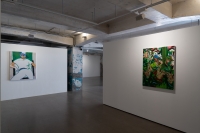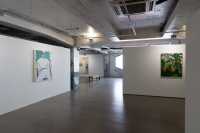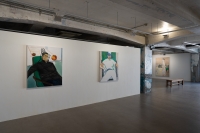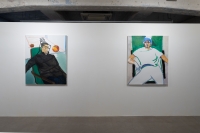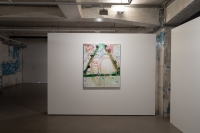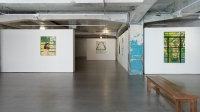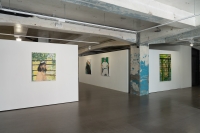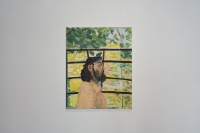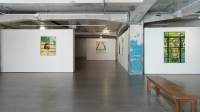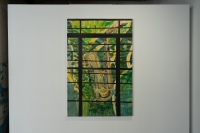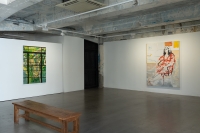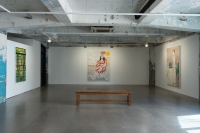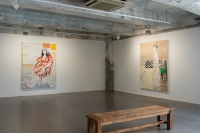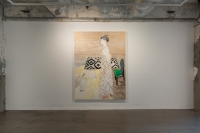鄭皓中擅長人物肖像繪畫,他常以身邊親近的人作為繪畫對象,從他人的
身上尋找「自我」表現的線索。畫室既是他工作的空間,亦是他創作的靈
感來源之一。他繪畫的畫面中經常以畫室為背景,畫室墻上的窗戶分隔了
畫室的內部和外部,隱喻著他連接世界的出入口。在疫情期間,鄭氏持續
練習薩克斯風,音樂的表演性質也逐漸融入了他的繪畫語言。
儘管都是人物肖像的題材,但不同的人物對象傳遞出了截然不同的心理 狀態和情緒。友人的肖像著重於親密關係中的微妙距離,自我的描繪則 用到音樂般的表演性來探索孤獨的語境。在鄭皓中的繪畫中可以看到, 表演性如何遊走於具象描摹和抽象線條之中,進行筆勢和筆勢之間的交 流。一如長音和短音、和弦與變調,他的繪畫不斷地在規範的制式邊緣 遊走,以期演繹一種在動態秩序下的不和諧音。
Zheng Haozhong creates portrait paintings of close friends and acquaintances, finding traces of self-expression in the depiction
of other individuals. His studio acts as a working space but also a source of inspiration, often serving as a backdrop in his paintings. The window on the studio wall emphasizes the interiority of the space, analogous to his connection to the exterior world. His work is imbued with an expressive and uninhibited character, reminiscent of musical improvisation. The brushstrokes channel the sentiments of his sitters, and teetering on prescribed norms, they are like discordant notes within order.
The self-portrait unveils the inner psyche of the artist as he peers through the window panes, seemingly in deep contemplation. Zheng’s paintings convey the distinctive expressions and gestures of each sitter, these portrayals of friends and companions hint at the subtle and unspoken distance within relationships. They embody
an expressiveness that treads the line between figurative depiction and abstract representations, each brushstroke an extension of the artist’s performance. Paralleling long and short tones, chords and modulations, his paintings straddle the boundaries of prescribed norms, performing dissonant notes within a dynamic framework.
